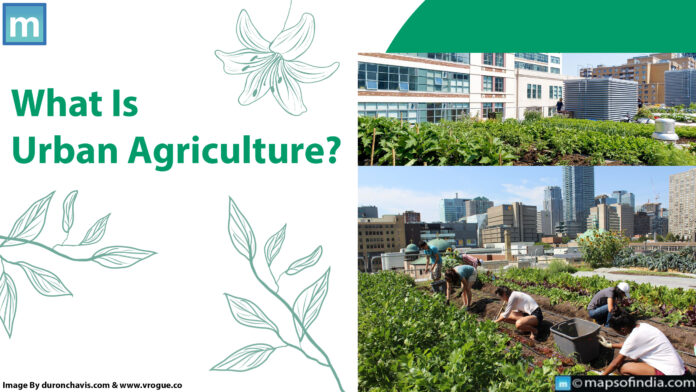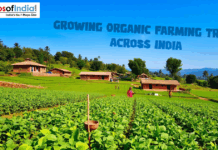Urban agriculture is an expanding movement affecting cities worldwide. An increasing number of people live in cities, making the integration of agriculture necessary. Urban agriculture provides a long-term answer for community involvement, environmental preservation, and food security. It provides neighbouring communities with a host of social, economic, and environmental benefits. Urban farming has the potential to improve overall air quality, save transportation costs, and lessen runoff during periods of severe rainfall.
This article explains urban agriculture’s ideas, advantages, and possibilities for more resilient, greener cities. See how it sows the seeds of transformation by bridging the gap between modern living and nature.
Urban agriculture: What is it?
The process of cultivating crops, rearing animals, or growing food in urban environments is called Urban agriculture, sometimes known as Urban gardening or Urban farming. It entails farming on publicly accessible urban areas like rooftops, balconies, communal gardens, and empty lots. Boosting local food production lessens reliance on outside food supplies and encourages self-sufficiency. India’s urban area comprises 6.77% of its total area; urban agriculture accounts for just 5% of its urban area and 0.56% of its agricultural land. It is mainly carried out in Kolkata, Bengaluru, Delhi, Mumbai, and Chennai.
Urban Agriculture Types
- Backyard gardens: cultivating food in one’s backyard, distributing excess to neighbours, and applying preservation techniques.
- Street landscaping includes creating greenery and other features on private roads, enhancing aesthetics, lowering runoff, and supplying food.
- Vertical farms: These use soilless farming methods such as hydroponics, aeroponics, and aquaponics, in which crops are grown in vertically stacked layers.
- Growing food in urban forests, encouraging afforestation, and halting global warming in urban settings is known as “forest gardening.”
- Rooftop Gardens: Gardens situated atop buildings provide a range of benefits, including improved architecture, temperature regulation, wildlife habitats, leisure, and food production.
- Vertically produced fruits and vegetables on purpose-built wall structures, known as “green walls,” use constrained space and various growing media.
- Beekeeping in Urban Environments: Maintaining bee colonies encourages healthier and more fruitful bees.
- Greenhouse farming involves growing crops in controlled surroundings, shielding them from pests and harsh weather, and boosting yield and quality.
- Aquaponics: A symbiotic system that combines fish farming and plant cultivation to produce high-yield crops and protein while maintaining clean water.
- Animal husbandry is the disciplined raising and caring of domestic animals to produce meat, milk, fibre, and eggs.
Technology in Urban Agriculture
- Smart farming techniques: Sensors, data analytics, and automation are used to maximise crop growth and resource management. These techniques allow farmers to monitor soil moisture, temperature, and light levels.
- IoT: Temperature, humidity, and illumination are just a few urban farming elements that IoT devices may monitor and manage. Additionally, by automating processes like fertilising and watering plants, these gadgets might lessen the need for physical labour.
- Automation: Automation can lower labour expenses and increase urban farming’s productivity. Crops can be planted, watered, and harvested using automated methods, eliminating the need for physical labour.
- Farmizen is a smartphone platform that lets users rent farms so they can cultivate their food.
Governmental Programs for Urban Agriculture
- “Do-It-Yourself” Kit: The Urban Horticulture Development Scheme is a unique kit that the Tamil Nadu government unveiled in 2014. With this kit, city dwellers can cultivate their own veggies on their homes’ rooftops and apartment buildings. With this kit, urban dwellers may easily become urban gardeners and eat fresh vegetables right in their own houses.
- Vegetable Development Program: This program promotes gardening in homes and public and private organisations such as schools. Its objective is to encourage a sustainable and healthful way of life and to encourage more people to cultivate their own vegetables.
- City Farming Project: This urban farming initiative encourages people to start farming on plots of land set aside for this purpose. The project’s goal is to give city dwellers the opportunity to grow their own food and to make farming more approachable and appealing.
- Smart Urban Farming: The Smart Urban Farming program provides financial support, technical aid, and training to urban farmers in need. Our support enables urban farmers to cultivate crops effectively and responsibly, creating a greener and more self-sufficient urban environment.




